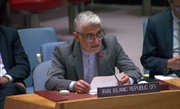In a time of plunging oil prices in world markets, Iran’s inauguration of its floating oil terminal would help reduce costs of production, transportation, unloading, and exports of crude oil; with oil prices sinking down even below $50 per barrel, analysts say countries who have reduced their costs of production and exports of oil to the lowest possible figures would be the real winners of current oil markets.
Aptly called ‘Persian Gulf,’ Iran’s FSU oil terminal is the country’s newest trump card as world’s largest oil tanker in highly shaky oil prices. The oil tanker enjoys the capacity to store 2.2 million barrels of oil. This giant tanker has started operation in west of Persian Gulf in Behregan region, with a major mission to store and directly export oil of nearby massive oil fields such as Nowrouz and Soroush; the tanker has attracted a lump sum of $300 million as investment.
Saied Hafezi, the directing manager of Offshore Oil Company, a subsidiary of NIOC, pointed to operation of the giant tanker Persian Gulf, saying that “loading of oil produced in Nowrouz and Soroush oil fields into the newly inaugurated giant tanker has been started, and currently, a daily load of 70,000 barrels of crude is transferred into the tanker.”
Hafezi also pointed to operation of Sorena, the company’s smaller oil tanker; “Sorena will continue its operation and any decision to phase out the tanker remains in the authority of the NIOC board of directors,” he added.
Persian Gulf floating oil terminal is equipped with the most advanced metering technology. The tanker enjoys the cutting-edge technology in terms of machinery and capacity.
SH
MNA
END
2483446






















Your Comment